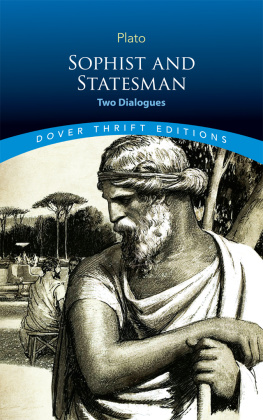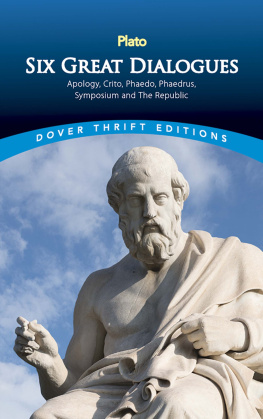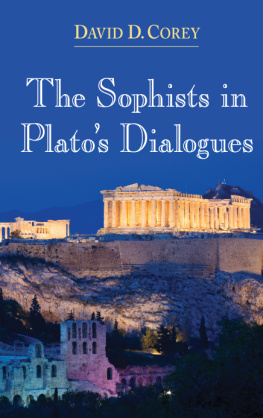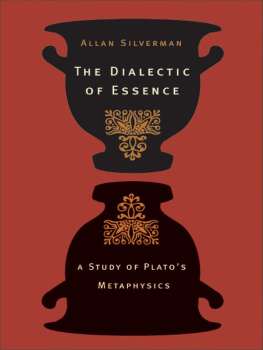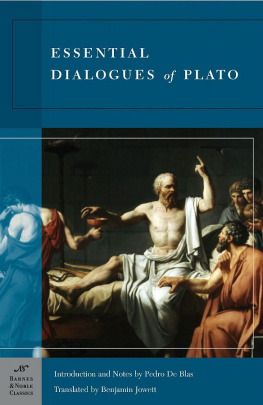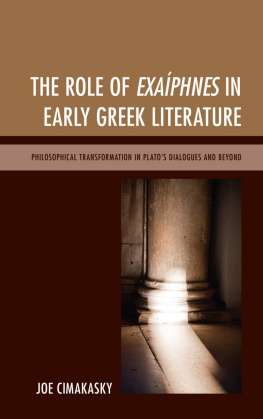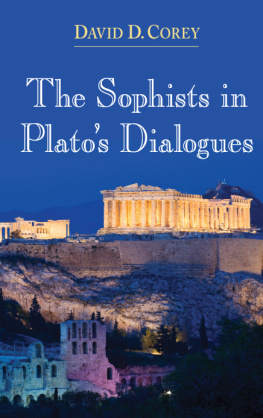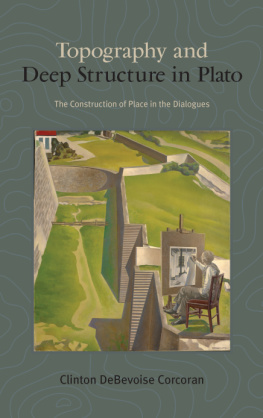The Musical Structure of Platos Dialogues
Also by J. B. Kennedy and published by Acumen
Space, Time and Einstein: An Introduction
The Musical Structure
of Platos Dialogues
J. B. Kennedy
First Published 2011 by Acumen
Published 2014 by Routledge
2 Park Square, Milton Park, Abingdon, Oxon OX14 4RN
711 Third Avenue, New York, NY 10017, USA
Routledge is an imprint of the Taylor and Francis Group, an informa business
J. B.Kennedy 2011
This book is copyright under the Berne Convention.
No reproduction without permission.
All rights reserved. No part of this book may be reprinted or reproduced or utilised in any form or by any electronic, mechanical, or other means, now known or hereafter invented, including photocopying and recording, or in any information storage or retrieval system, without permission in writing from the publishers.
Notices
Practitioners and researchers must always rely on their own experience and knowledge in evaluating and using any information, methods, compounds, or experiments described herein. In using such information or methods they should be mindful of their own safety and the safety of others, including parties for whom they have a professional responsibility.
To the fullest extent of the law, neither the Publisher nor the authors, contributors, or editors, assume any liability for any injury and/or damage to persons or property as a matter of products liability, negligence or otherwise, or from any use or operation of any methods, products, instructions, or ideas contained in the material herein.
ISBN: 978-1-84465-266-2 (hardcover)
ISBN: 978-1-84465-267-9 (paperback)
British Library Cataloguing-in-Publication Data
A catalogue record for this book is available
from the British Library.
For Louise Crascall
But, friend, when you grasp the number and nature of the intervals of sound, from high to low, and the boundaries of those intervals, and how many scales arise from them, which those who came before handed down to us, their followers, to call harmonies, and when you grasp the various qualities inhering in the motions of the body, which they said must be measured with numbers and named rhythm and metre, and when you apprehend that every One and Many should be so investigated, when you have grasped all of that, then you are wise Plato (Phlb., 17c11-e1)
Nothing is so characteristic of the Pythagorean philosophy as symbolism (to symbolikon), a kind of teaching which mixes speech and silence as in mystery rites what they signify is immediately lucid and clear for those who are accustomed to it, but dark and meaningless to the inexperienced with the Pythagorean symbols what seems to be affirmed is really being concealed, and what seems to be concealed is discerned by the mind. Plutarch (in Stobaeus iii.i.199 [Wachsmuth & Hense])
Our discussion will be adequate if it has as much clearness as the subject-matter admits of, for precision is not to be sought for in equal degree in all arguments it is the mark of an educated mind to look for precision in each kind just so far as the nature of the subject admits; it is evidently equally foolish to accept probable reasoning from a mathematician and to demand demonstrative proofs from a rhetorician
Aristotle (Eth. Nic. 1094b11ff. [after Ross])
Les anciens philosophes avoient une double doctrine; lune externe, publique ou exotrique; lautre interne, secrete ou sotrique. La premiere senseignoit ouvertement tout le monde, la seconde toit reserve pour un petit nombre de disciples choisis Ce qui a fait prendre le change aux anciens & aux modernes sur le but de la double doctrine, & leur a fait imaginer quelle ntoit quun artifice pour conserver la gloire des sciences & de ceux qui en faisoient profession, a t lopinion gnrale que les fables des dieux & des hros avoient t inventes par les sages de la premiere antiquit, pour dguiser & cacher des vrits naturelles & morales Diderot and DAlembert (Encyclopdie ou Dictionnaire raisonn des sciences, des arts et des mtiers)
Contents
The following arguments and evidence for the musical structure of Platos dialogues were refined and strengthened in lectures for classicists at the University of Manchester, University College London, the University of Leeds and the Classical Association Conference at Durham University. They amplify many times over the grounds for the conclusions first reported in my Platos Forms, Pythagorean Mathematics, and Stichometry (2010), and I am grateful to Acumen for bringing this book out promptly in response to the debate they occasioned.
At a time when the study of the humanities in universities is endangered, this debate has brought an extraordinary degree of attention to classics and ancient philosophy. The scholars and journalists who discussed this research in newspapers, broadcasts and online forums throughout the world have reminded many of the living importance of ancient Greek philosophy and literature.
These findings open up new lines of research, many more than can be pursued by any one scholar, and it may take time to assess their implications. As my title indicates, this book has a limited aim. It is a study of the musical structure in two dialogues, prefaced by some general and historical evidence.
However tantalizing, there are two reasons for proceeding in this way. First, Platos musical symbols are repeated at regular intervals through the text of each dialogue and so can be studied rigorously and objectively. Claims can be verified first by making comparisons within a dialogue and then by showing that the same structure recurs in different dialogues. Second, the study of the symbols with doctrinal content depends on first establishing that the dialogues have a stichometric and musical structure. Thus the musical symbols are prior both methodologically and logically.
Nonetheless, a glimpse of doctrine is afforded by , Extracting Doctrine from Structure, which focuses on a single, ethical doctrine but shows generally that stichometry will yield up revisionist insights into Platos philosophy.
This research has already stimulated new work and led to a number of collaborative projects. Given the nature and the magnitude of these findings, however, scholars coming to these claims for the first time will naturally and properly react with scepticism. Although it was common for some fifteen hundred years to regard Plato as a symbolic writer and although Platos familiarity with Pythagorean numerology is well attested in his writings, modern scholars have uniformly denied that Platos dialogues are in any general way symbolical, allegorical or numerological.
Researchers in the history of science have, for a generation or so now, become accustomed to the idea that the study of primitive pseudo-sciences is essential to understanding the growth of modern science. The births of astronomy, chemistry and mathematics are to be found in astrology, alchemy and numerology. Historians of science have also become accustomed to stories of the neglect or marginalization of the histories of these pseudo-sciences in earlier work. The discovery of Newtons alchemical experiments and Pythagoreanism by Keynes and others is the most prominent case. Similar cases of neglect and rediscovery, more closely related to Platonism, are discussed below to establish certain methodological precedents.
This research grew out of a project on Greek mathematics, particularly on the connections between Platos



